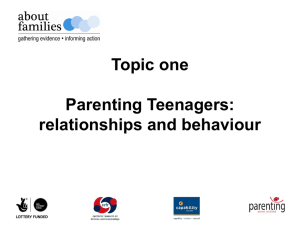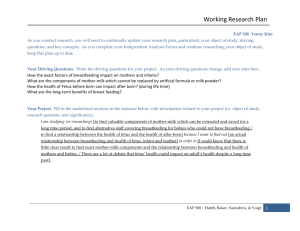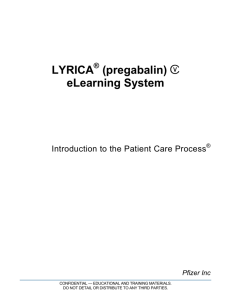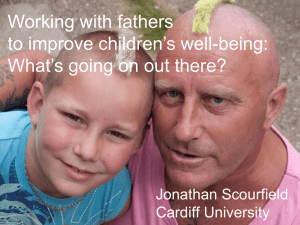The role of the Health Visitor - Somerset children & young people
advertisement
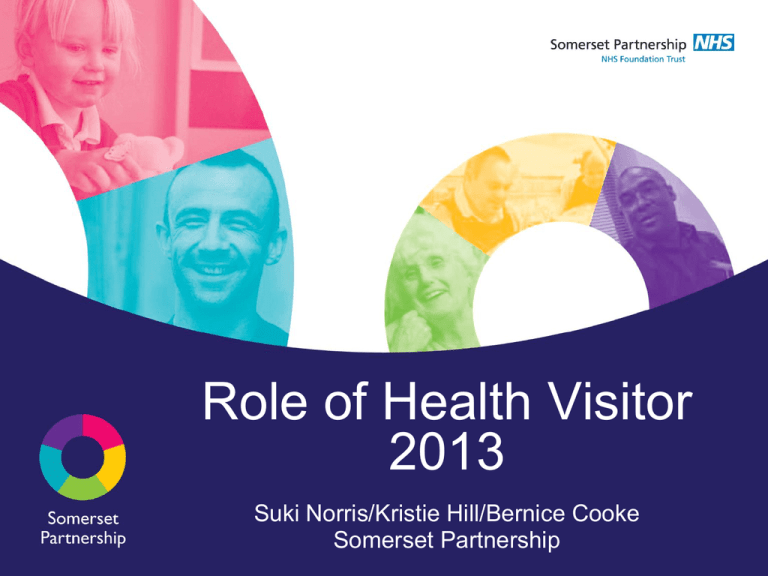
Role of Health Visitor 2013 Suki Norris/Kristie Hill/Bernice Cooke Somerset Partnership What is the Healthy Child Programme? The Healthy Child Programme (HCP) is offered to all children. The HCP for children aged 0-5 is the early intervention and prevention public health programme that lies at the heart of our universal service for children and families. It is a programme of screening, immunisation, health and developmental reviews and information and guidance to support parenting and healthy choices. These are all services that children and families need to receive if they are to achieve their optimum health and wellbeing. Key elements of the service • Community – the needs of local communities are understood; • Universal – all elements of the HCP are delivered. Contacts with families are increased from the antenatal period to school age; • Universal plus – evidence based care packages offered as part of Universal plus are clearly defined. Key elements continued... • Universal partnership plus – There should be a named health visitor on the management board of the local Children’s Centre; • the importance of the Health Visitors role in service co-ordination is emphasised, attendance at HCP meetings is recommended; • Safeguarding children – this takes priority. There is a requirement for effective partnership working and robust systems of identification, support and supervision are in place. Terminology Minimum Core Contacts The universal contacts that will be offered are: Antenatal contact (after 28 and before 36 completed weeks of pregnancy) Initial new birth contact (Between 10-14 days) Six to twelve week health review After six months and before one year health review Two – two and half health review. Emphasis on integrated services • to be led by a health visitor and delivered by a range of practitioners across the health service and the wider children’s workforce; • health practitioners supporting early years staff in their role to promote the health of children; • identifying when children and their families need access to additional services; • initiating and updating a robust Family Health Needs Assessment at all contacts. Increased focus on vulnerable children and families “A progressive universal HCP is one that offers a range of preventive and early intervention services for different levels of risk, need and protective factors.” “If we are to reduce inequalities in children’s health, wellbeing and achievement, we need to focus on the most vulnerable children and families, and allocate resources accordingly.” Parenting support • supporting mothers and fathers to provide sensitive and attuned parenting, in particular during the first months and years of life; • supporting strong couple relationships and stable positive relationships within families; • ensuring that contact with the family routinely involves and supports fathers, including non-resident fathers; • supporting the transition to parenthood, especially for first-time mothers and fathers. New information about neurological development and child development • the importance of attachment and positive parenting in the first years of life for future outcomes for children; • a greater focus on pregnancy; • recognising the specific impact that mothers and fathers have on their children; • building service that responds to the different risk factors for children’s future life chances; • integrating NICE guidelines i.e. maternal mental health, and antenatal and postnatal care; • incorporating interventions to build resilience and improve outcomes. Use of new technologies and scientific developments • new vaccination and immunisation programmes; • new tests, such as newborn hearing screening and expanding newborn bloodspot screening programmes; • maximising the potential of the internet, digital TV, help lines and text messaging services to provide parents with information and guidance; • improved data collection systems and electronic records. • Changed public health priorities • breast feeding; • get the balance right between encouraging play and physical activity, and minimising the risk of injury; • reducing childhood obesity; • promoting the social and emotional development of children; • school readiness. Early Identification and Early Intervention is the main aim of our service Caseload Sizes • Super output areas – 250-300 • Rural areas – 350-400 • Child Protection – 15 A rigorous family health needs assessment is required to assess priority Information Sharing Two Monthly multi-disciplinary Meetings • Maisey Meetings (Multi Agency Intervention and Support in Early Years) • Early Years Practitioners meet and discuss children with additional educational needs. Main aim is to support children through the different developmental stages in order to make a successful entry into school. • Healthy Child Meetings – Health Visitors work with Children's Centres to improve the outcomes for the most vulnerable families in our communities. Planning and Co-ordinating care Both meetings ensure that services and provision are looked at as a whole and co-ordinated around individual needs. Each meeting has a database of children (discussed with parents consent) Each child and family are discussed individually and a care package is designed. Home visits regularly take place with health visitors linking with family support advisers or health professionals such as OT’s, Community Physiotherapy, Portage etc. To make sure that we are working towards the same goals. Care Packages are designed with the family, who are asked to contribute and agree the goals identified. We try to keep to a time frame so that our visits are focused and concise . Health Promotion Essential to the success of the Healthy Child Programme At each Healthy Child Meeting we set aside time to discuss the delivery of Health Promotion Programmes appropriate to our communities. We discuss local priorities, Update each other on changes within our services and highlight deficiencies that can be resolve. Somerset Partnership Priorities • Improving breast feeding rates – We are currently in the top third of the country for breast feeding rates but we still have work to do. We ask women in the ante-natal period their feeding intentions, although 72% say they wish to breast feed only 65% actually do – when we take over from the midwives the figure is down to 61% and by 6 weeks post natal only 50% are continuing to feed. The government’s aim is that all babies will be exclusively breast fed for the first 6 months of life. • Supporting Young Teenage Parents – We have recently introduced an increased level of support for teenage parents. We have tried to bring our service up to date to attract this target group using a workbook detailing the progress of the pregnancy. Thank you for listening – any questions?




